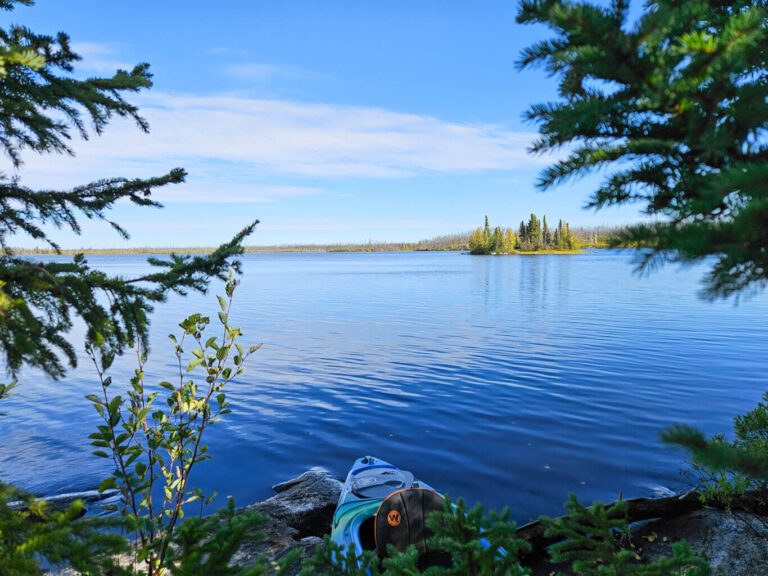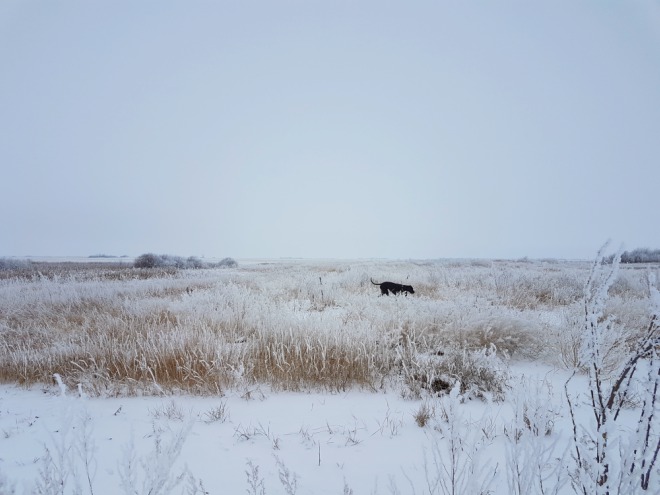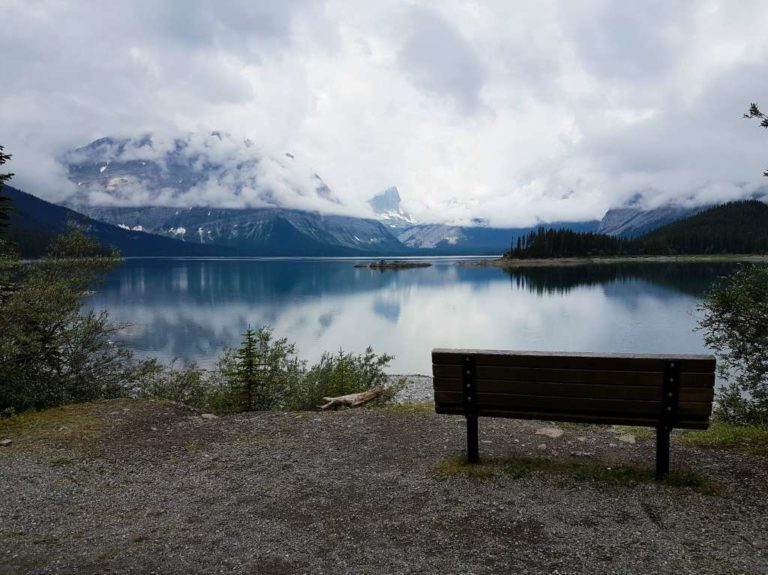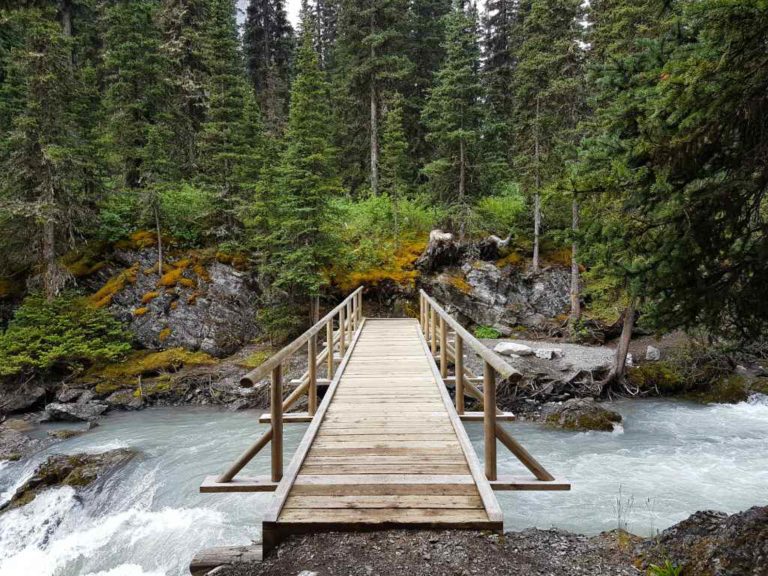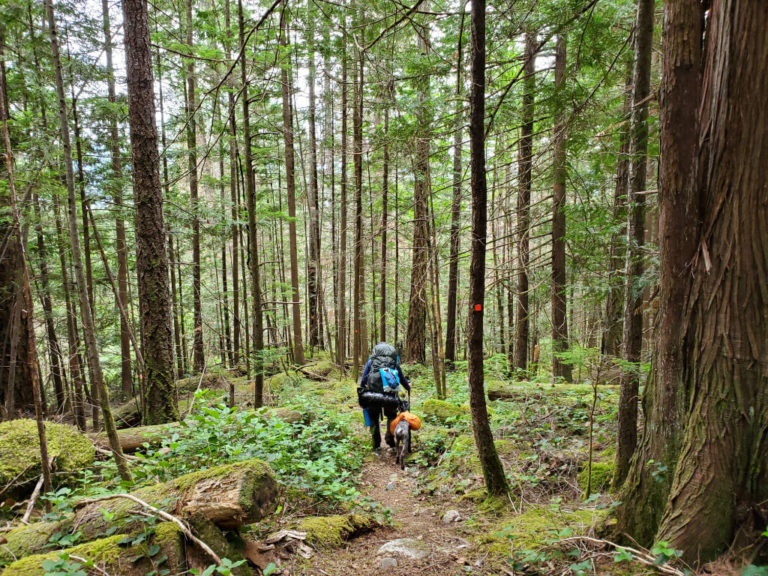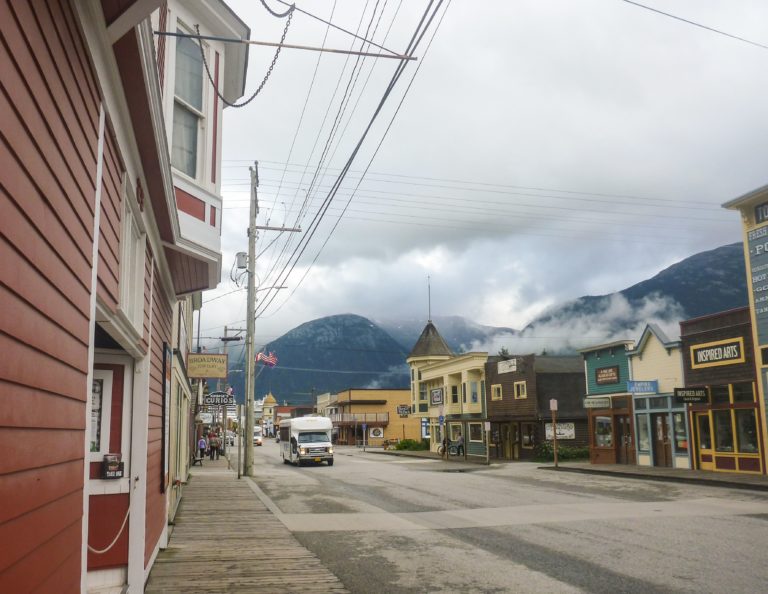BACKCOUNTRY PADDLING 101: SAFETY CONSIDERATIONS
Welcome to Backcountry Paddling 101, a series of posts designed to help you get out and enjoy the backwaters.
This post focuses on a very important part of any backcountry adventure – safety considerations.
This post may include affiliate links. As an Amazon Associate I earn from qualifying purchases. Find more info in my privacy policy.
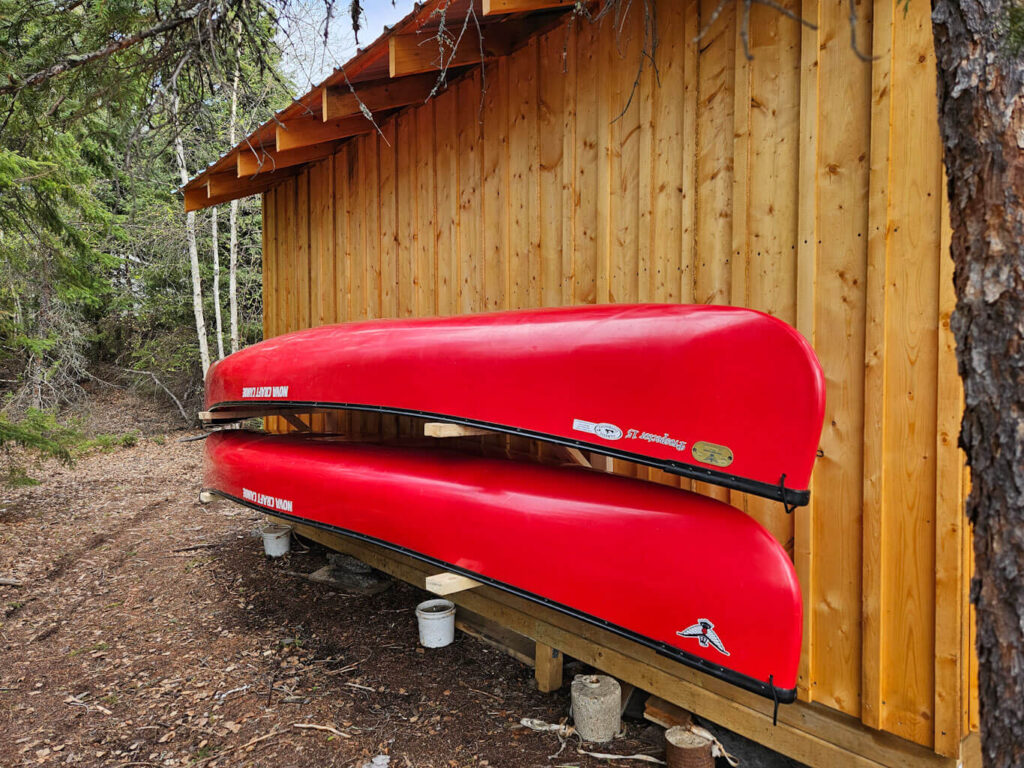
For more on everything you need to know about backcountry paddling, check out the other posts in the series:
BACKCOUNTRY PADDLING 101: TRIP PLANNING
BACKCOUNTRY PADDLING 101: ESSENTIAL GEAR FOR CANOE AND KAYAK CAMPING
BACKCOUNTRY PADDLING 101: PREPARING FOR YOUR TRIP
BACKCOUNTRY PADDLING 101: LEAVING NO TRACE AND LESSENING YOUR IMPACT
One of the most rewarding parts of backcountry adventuring is the level of self-reliance it requires. It’s up to each paddler to ensure that they are well prepared to deal with potentially dangerous situations while out on the water and in the wilderness. Having the proper knowledge and gear is essential.
Below is an overview of various safety-related topics as well as links to resources that will help further your knowledge.
WEATHER-RELATED HAZARDS
Paddlers are often exposed to weather conditions for long periods of time with little protection from the elements. Be sure to check the forecast before heading out and take along any gear and clothing necessary for the conditions. Keep in mind that forecasts can be wrong and it’s best to be prepared for any situation.
Paddlers can be susceptible to:
HYPOTHERMIA
In cold weather, paddlers can develop hypothermia when body temperature falls below 35C (95F). This can occur due to low air temperatures but is an even higher risk when wet. Rain, damp conditions, and capsizing can all increase your risk of hypothermia.
Shivering is an early symptom of hypothermia. As it progresses, other symptoms include slurred speech, shallow breathing, weak pulse, lack of coordination, drowsiness, and confusion.
Wearing layers and staying dry can help prevent hypothermia. Wetsuits and drysuits can be good options when paddling in cold conditions. Remember to consider water temperature even when the weather looks good and air temperatures are high.
Resources:
Hypothermia Protection – Paddling.com
Cold Water Protection & Hypothermia – NRS
HYPERTHERMIA
At the other extreme, paddlers can be susceptible to heat exhaustion or the more serious heat stroke when paddling in hot-weather conditions.
Hyperthermia occurs when body temperature climbs to 40C (104F). As with hypothermia, hyperthermia occurs in stages. Symptoms can begin with dizziness, weakness, nausea, thirst, and headache eventually progressing to loss of concentration and coordination, confusion, fainting, rapid pulse, muscle cramps, and cool/clammy skin.
Heat-induced conditions can be prevented by wearing light-coloured clothing and a hat, taking breaks and getting out of the sun at the hottest part of the day, wetting yourself down, and staying hydrated.
Resources:
Avoiding Heat-Related Illness – Traditional Mountaineering
STORMS
Storms can come up quickly and unexpectedly. Keep an eye on the forecast both before your trip and each morning before heading out on the water. Keep in mind that storms are not always predicted.
Dangers that come with unexpected weather events include: low visibility, wind, waves, flash flooding, a drop in temperature, and lightning strikes.
If you are caught in a storm, get off the water and seek shelter if possible. You can find more tips about surviving a thunderstorm through the links below.
When setting up camp, watch for “widow makers” or large, dead branches or trees that could come down in high winds. Following a storm, watch for debris and rising water levels.
Resources:
Safety in a Thunderstorm – Paddling.com
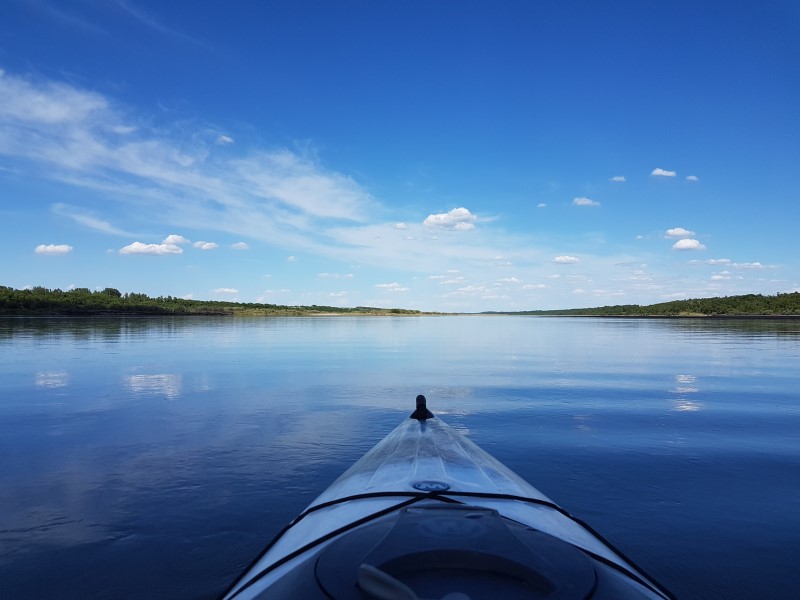
WATER-RELATED HAZARDS
There are an untold number of hazards that paddlers can face while out on the water including: tides, swell, currents, surface and submerged obstacles, cold water temperatures, flash flooding, capsizing, drowning, and marine traffic, just to name a few.
As part of your trip planning, you should be aware of any potential and likely water-based hazards along your route and be prepared to deal with these. Each environment will be unique in the challenges it presents but below you can find some resources that bring awareness to potential hazards.
Resources:
7 Dangers of Ocean Kayaking – Explore.com
Dangers of Kayaking – Paddle Pursuits
Dangers of Flatwater Kayaking – The Nest
EMERGENCY PREPAREDNESS
Paddlers will want to be prepared for emergency situations such as medical emergencies and injuries. Of course, it is hard to predict when a medical emergency, such as a heart attack, will occur but having basic CPR and first aid knowledge will help in such situations.
Members of the group should discuss any medical conditions before heading out on the trip and make a plan should something happen.
Due to the nature of backcountry paddling trips, a number of different injuries are possible. Wilderness first aid courses and practicing rescues are well worth the time and effort.
Knowing where the closest available emergency services are located is crucial, as is knowing how to contact them. Carry emergency phone numbers with you to be used if and when you have cell service or access to telephones in nearby communities.
For remote trips, you may want to consider carrying a personal locator beacon or satellite messenger device such as a Spot or Garmin inReach.
In addition to being prepared for full-blown emergencies, backcountry paddlers will also benefit from an ability to deal with unexpected events and mishaps. As important as it is to plan and prepare for your trip, there will always be those things that you couldn’t have foreseen. Be prepared to deal with situations as they arise and get creative with your solutions to problems.
Wilderness survival skills and knowledge can come in handy when things really go sideways. If you end up in a situation where extraction is necessary, survival skills can make the difference between life and death while awaiting rescue. Some basics include fire making, shelter building, foraging for food, and signalling for help. Consider taking a basic survival course before your trip.
Resources:
Preparing for Medical Emergencies – NRS
Common Paddling Injuries – Paddling Mag
NAVIGATION
Navigation and wayfinding skills are essential for backcountry trips to prevent getting lost or stranded. The level of knowledge necessary will depend upon the environment in which you are paddling.
Basic compass and map or chart reading skills are useful. If using a GPS, be familiar with how to use it before heading out and always have a backup method of navigation should it fail.
If you will be landing, launching, or passing through heavily trafficked areas, be familiar with marine navigation rules and best practices to avoid collisions with other vessels and to ensure you know where you should and shouldn’t be paddling.
Resources:
Canoe and Kayak Navigation – Paddling Light
Signaling Devices – Paddling Light
FOOD AND WATER
Unsafe food and water practices in the backcountry can lead to everything from mild gastrointestinal upset to serious life-threatening diseases. You don’t want to end up dealing with either.
Another potential danger regarding food is losing your supply to wildlife. Both of these situations can be prevented by following safe food storage practices and by treating your water.
You’ll want to store your food in a way that keeps it from spoiling and that prevents animals from accessing it. Remember that it’s not only large predators like bears you have to worry about. Paddlers have been known to lose food to squirrels and rodents too.
To prevent animals from accessing your food:
Keep food in sealed bags to reduce odors.
Store food in animal-proof canisters, barrels, or storage lockers (if available) or hang properly from a tree.
You can prolong the life of fresh foods by pre-freezing and packing in a cooler or cooler bag with ice. Even with this method, fresh food is generally only suitable for the first day or two of the trip. Never eat food you expect has turned bad. Pack all food in waterproof bags to prevent it from getting wet and spoiling. Wash or sanitize your hands before handling food.
All water obtained in the backcountry should be treated. Boiling, filtering, and chemical and UV treatments (or a combination of these methods) are suitable treatment options.
Resources:
Food Storage and Handling – REI
Backcountry Water Treatment – MEC
How to Hang a Bear Bag – Backpacker
WILDLIFE
From the smallest insects to the largest apex predators, wildlife can pose a number of threats including disease transmission, parasitic infection, and defensive or aggressive attacks.
As part of the trip planning process you should learn what types of animals inhabit the areas through which you will be passing and understand the potential dangers and best practices for dealing with an encounter.
Preventing an encounter in the first place is ideal. The best strategy for this will vary depending on the environment and species of animal, but some general preventative measures include the following:
To avoid disease-carrying insects like ticks and mosquitoes: wear insect repellant, light-colored clothing, bug-net clothing, and use an enclosed shelter or netting at night.
To avoid bites and stings from critters like snakes, scorpions, and spiders: wear sturdy shoes and long pants or gaiters, look before sitting down or walking through areas where they are common, and check your shoes in the morning before putting them on (as well as any other areas they might hide).
To avoid encounters with large mammals such as bears, wolves, and cougars: store food and anything with an odor in a sealed and secure manner away from your camp. If possible, do not take breaks or set up camp where there are fresh signs such as paw prints, scat, or dens. Travel in groups and make noise.
To avoid water-based creatures like sharks, alligators, and crocodiles: learn where and when they are most likely to feed and steer clear of these areas if you can, avoid splashing, and paddle in groups.
Remember that it’s not only the animals we typically see as threatening who present a problem. Rodents and other small mammals can destroy food sources and carry disease. Animals often thought of as docile, like deer and moose, can become aggressive when they feel threatened.
Keeping your campsite tidy, your food and gear secured, and not approaching or provoking wildlife will go a long way in preventing a problem.
Resources:
Bears, Cougars and Ticks – Outdoor Vancouver
Paddling With Sharks – Paddling Mag
Squirrels & Rodents – Hit the Trail
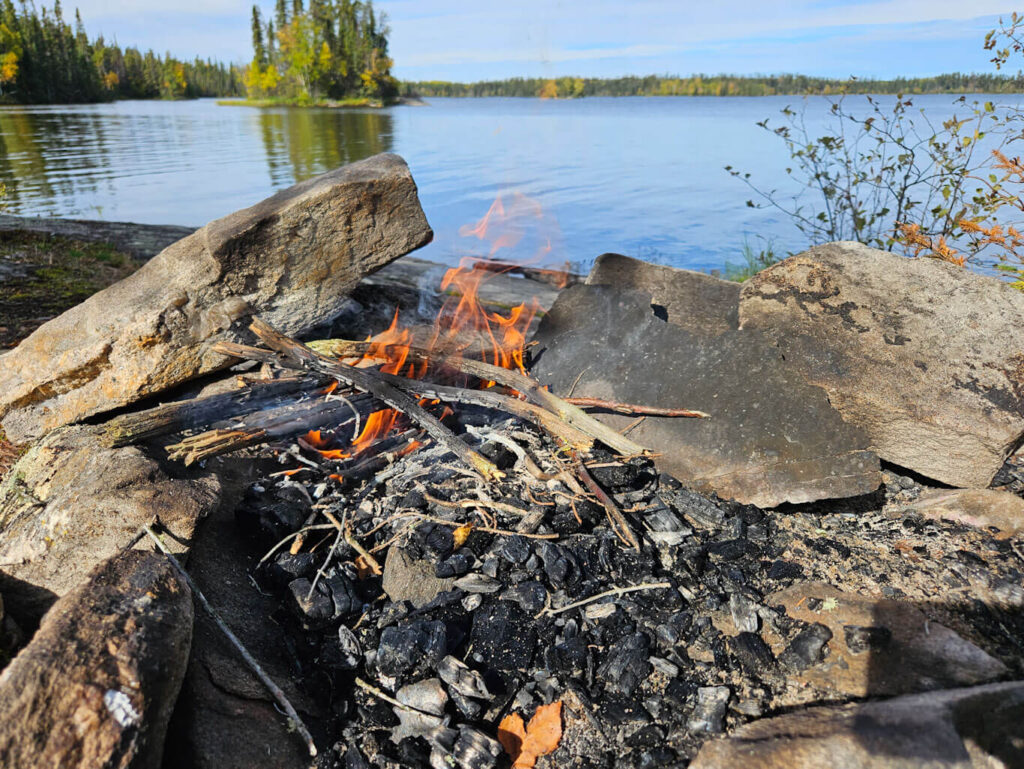
FIRE SAFETY
When it comes to safety, fires can be both a lifesaver and a danger.
Having the right gear and knowledge to start a fire will come in handy if things go sideways and you end up in a survival situation. A basic fire kit should include a lighter and/or waterproof matches, flint, and some type of dry fire starter material. Practice building fires at home before you head out.
At the same time, you should be aware of the dangers of both being caught in a wildfire and of having your own fire get out of control. Take note of any fire bans or restrictions specific to the area and stay up to date on the status of any wildfires that are already burning.
Ensure your fires are COMPLETELY out before leaving camp by dousing with water and stirring. Repeat this process until all contents are cool to the touch.
Resources:
Wildfire Season and Campfire Safety – WTA
TRIP PLAN AND EMERGENCY PLAN
One of the most important parts of a backcountry paddling trip is filing a float plan or trip plan prior to departure.
These plans answer the questions of who, where, when, and what a trip involves and will ensure that, should something happen, the appropriate authorities will be notified promptly and given the information they need to do their jobs.
If you will be paddling in an area managed by an organization or group, check if you can file a float plan with them. Otherwise, the plan should be left with someone you trust and should include the following information:
Personal information: the names, ages, physical description and any relevant info (medical conditions, etc.) of each member of the group
Emergency contact information: names and numbers of next of kin for each group member as well as numbers for the appropriate authorities to be notified
Trip details: expected date and time for departure and return; planned route; location of planned campsites; planned activities (ex: doing a side hike)
An agreed upon day/time at which authorities should be contacted if you have not arrived back. Be sure to include a buffer for normal setbacks (windbound days, miscalculation of time required, etc.)
Equipment list and description of clothing: it can be helpful for authorities to know how prepared you are for a survival situation, the methods of communication you may be attempting to signal with, and what colour of clothing you are wearing.
A copy of your emergency plan. This is the protocol with which your group will deal with emergency situations while in the backcountry. The details will vary based on the type of trip and the members of the group but could include:
- agreed upon meaning of arm/whistle signals for communication
- the location of safety gear and first aid supplies
- instructions for use of communication devices
- strategies for dealing with various rescue situations
- possible exit points
Resources:
As with most things in life, backcountry paddling brings with it inherent risk. However, a little planning and preparation will go a long way in keeping you safe.
Learn the potential and likely risks of your particular trip and take some time to gather the appropriate gear and knowledge before heading out.
For more on everything you need to know about backcountry paddling, check out the other posts in the series:
BACKCOUNTRY PADDLING 101: TRIP PLANNING
BACKCOUNTRY PADDLING 101: ESSENTIAL GEAR FOR CANOE AND KAYAK CAMPING
BACKCOUNTRY PADDLING 101: PREPARING FOR YOUR TRIP
BACKCOUNTRY PADDLING 101: LEAVING NO TRACE AND LESSENING YOUR IMPACT

